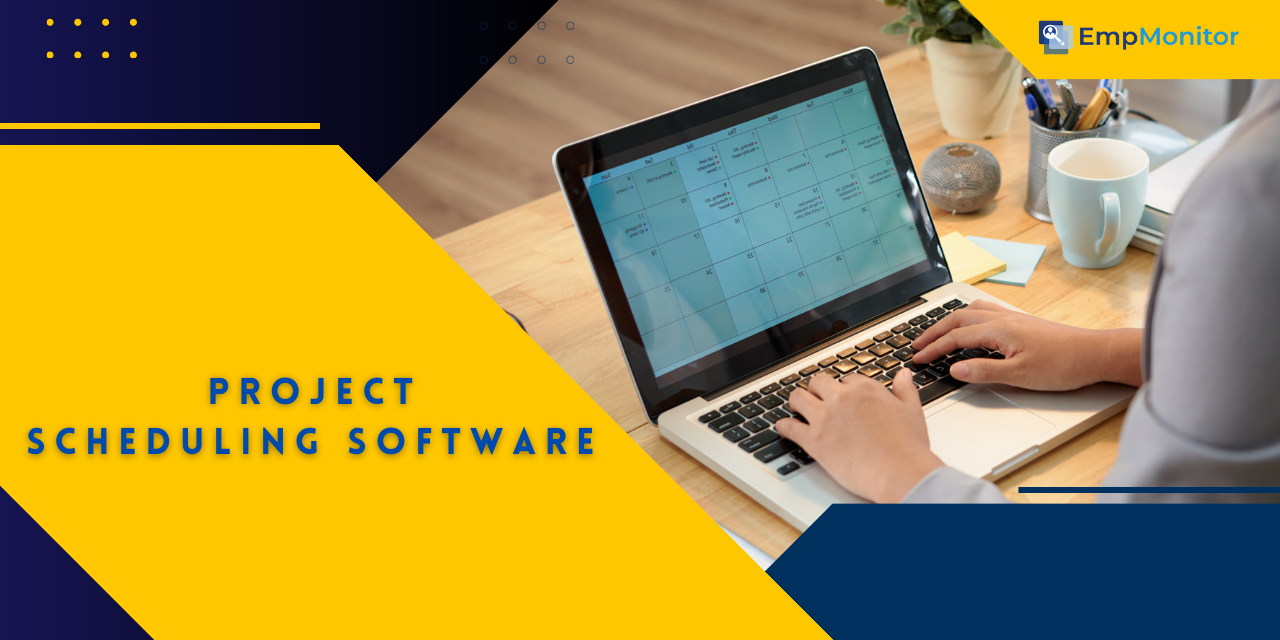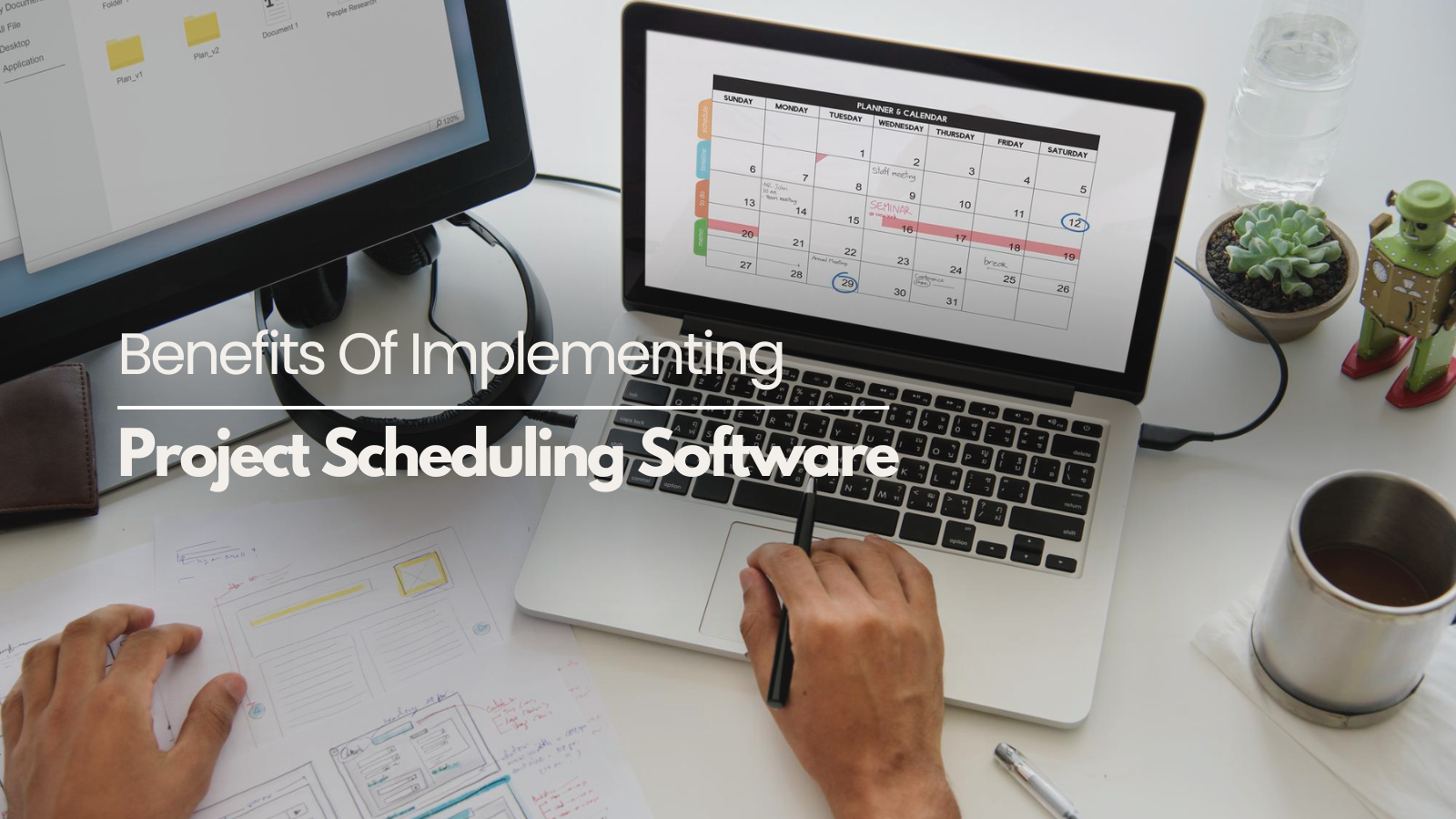Visualize your team managing numerous tasks, with deadlines looming and everything feeling like it’s spiraling out of control. Sounds stressful, right? In that case, having a project scheduling software could be a great help.
Even the most talented teams can struggle without a clear schedule. Missed deadlines, miscommunication, and uneven workloads can all hinder productivity. It’s like trying to solve a puzzle without knowing the final picture.
With project scheduling software, you can streamline your work plans, task assignments, and progress tracking effortlessly. It provides a structured framework that helps teams stay organized and focused.
Also, these tools enhance team productivity by offering a clear roadmap, automating routine tasks, and facilitating seamless collaboration.
In this blog post, we’ll explore how project scheduling software can transform your team’s workflow, turning chaos into harmony and stress into success.
Let’s get started!
Hit ‘Play’ Button & Tune Into The Blog!
What Is A Project Scheduling?
Project scheduling is a critical process in project management that involves breaking down tasks, assigning resources, and establishing realistic timelines. It serves as a roadmap guiding the project team from inception to delivery.
By defining task sequences, resource availability, constraints, and dependencies, scheduling ensures efficient resource utilization and logical task prioritization. Clear milestones and deadlines provide a framework that helps teams maintain organization and focus on efficiently achieving project objectives.
Different Types Of Project Schedules
Project schedules come in several types, each serving specific purposes and levels of detail:
Master Schedule: This provides a panoramic view of the entire project. It outlines the overall timeline, key milestones, and the expected completion date. The master schedule is crucial for high-level communication with stakeholders and serves as a foundation for more detailed planning.
Milestone Schedule: This focuses on the critical milestones of a project. Milestones are significant achievements that mark key progress points towards the project’s ultimate goal. This type of schedule helps in tracking these important milestones and ensures the project stays on course.
Detailed Schedule: This delves deeply into the specifics of the project. It breaks down the project into individual tasks, assigns resources, and estimates durations for each activity. A detailed schedule enables precise resource allocation, identifies potential bottlenecks early on, and ensures the team remains aligned on deadlines and objectives.
What Are Project Scheduling Software?
Project scheduling software is a digital tool that helps businesses and freelancers effectively plan, organize, and manage projects. These tools streamline scheduling, resource allocation, deadline setting, and progress tracking in a centralized platform.
They provide a structured framework for managing tasks, timelines, and resources, ensuring efficient project goal achievement. Additionally, these software solutions often include visual aids like Gantt charts or Kanban boards. These visual elements display tasks, timelines, and dependencies, simplifying project progress monitoring, critical path identification, and resource visualization.
Looking for a complete scheduling and workforce solution? Try EmpMonitor for an all-in-one platform that streamlines project management and boosts productivity.
Benefits Of Implementing Project Scheduling Software
Project management scheduling tools offer numerous advantages that can significantly enhance your team’s productivity and project success rates:
Enhanced Planning Efficiency
Project scheduling software enables you to create a clear visual roadmap for your project. Tasks can be easily broken down, assigned, and sequenced, ensuring everyone understands their roles and contributions to the project.
Improved Resource Allocation
The software allows you to visualize resource availability and workload, strategically assigning tasks to optimize efficiency and prevent overallocation, thus avoiding burnout among team members.
Realistic Timelines
Features like task dependencies and duration estimates help create realistic project timelines, considering potential obstacles and unforeseen circumstances.
Increased Collaboration And Communication
Scheduling software fosters a centralized platform for team communication and collaboration. Team members can discuss tasks, share files, and provide updates directly within the project scheduler, reducing reliance on scattered emails and messages.
Improved Transparency
Everyone has access to the latest project information, promoting transparency and keeping everyone on the same page. This reduces confusion and allows for timely course correction if needed.
Access to real-time project information promotes transparency, ensuring everyone stays informed and aligned. This clarity reduces confusion and enables timely adjustments as needed.
Enhanced Monitoring
Project stakeholders can easily view progress reports and track the overall project health, fostering trust and informed decision-making.
Improved Time Management
The software facilitates better time tracking and management, allowing team members to prioritize tasks effectively and minimize distractions.
Data-Driven Decision Making
Project scheduling software provides valuable data insights into project performance, enabling informed decision-making and continuous improvement of project management processes.
Reduced Risk Of Errors
Clear communication, task dependencies, and centralized information storage contribute to fewer errors and rework, saving time and resources.
Improved Client Satisfaction
By keeping projects on track and stakeholders informed, project scheduling software can enhance client satisfaction and build trust.
Scalability And Adaptability
Project scheduling tools are designed with scalability in mind, effortlessly accommodating the growth of teams and the complexities of projects. They provide flexibility to adapt to evolving project requirements with ease.
Overall, project scheduling software is a powerful tool that simplifies workflows, improves communication, and boosts team productivity. By leveraging its features, including the ability to manage multiple projects, you can ensure your projects stay on track, achieve goals efficiently, and deliver successful outcomes.
Types Of Project Scheduling Software
There are various types of project scheduling software available, each offering different features and functionalities to meet the needs of different organizations and projects. Here are some common types of project scheduling software:
Integrated Project Management Software (IPM)
These comprehensive project management solutions include scheduling as one of their core features. They typically offer tools for task management, resource allocation, budget tracking, and collaboration.
Standalone Scheduling Tools
Designed specifically for creating and managing project schedules, these tools often include advanced features like Gantt charts, Critical Path Method (CPM), resource leveling, and dependency management.
Cloud-Based Project Management Software
Online platforms accessible via web browsers or mobile apps, offering project scheduling and management functionalities. They typically provide real-time updates, collaboration tools, and integration with other business and project management software.
Collaborative Project Management Platforms (CPM)
These platforms emphasize team collaboration and communication alongside project scheduling. They often include features like task boards, chat integrations, file sharing, and project tracking.
Choosing the right project scheduling software depends on factors such as project complexity, team size, industry requirements, budget constraints, and specific project management needs. Each type of software offers distinct advantages, so evaluating these factors will help determine the best fit for your organization or project.
Key Features To Look For In Project Scheduling Software
When selecting project scheduling software, consider the following essential features to ensure effectiveness:
Task Management: Look for task management capabilities that allow users to create, assign, prioritize, and track tasks across projects. It includes managing task dependencies and subtasks effectively.
Resource Allocation: Choose tools that allow for efficient allocation of resources (human, financial, and material). Features that aid in resource planning, prevent overallocation, and optimize resource utilization are essential.
Visual Scheduling Tools and Templates: Ensure the software provides visual representations of project timelines and milestones through Gantt charts or similar tools.
Additionally, look for customizable project schedule templates that can save time and provide a standardized structure for planning and managing projects, ensuring consistency and efficiency.
Collaboration Tools: Built-in communication and collaboration tools such as messaging, file sharing, and task comments are vital. These features facilitate seamless communication among team members and stakeholders.
Reporting and Analytics: Opt for software with robust reporting capabilities to generate comprehensive reports on project progress, resource utilization, and team performance metrics. Analytics tools are crucial for making data-driven decisions and identifying areas for improvement.
Integration Capabilities: Ensure compatibility and integration with other software tools commonly used in project management, such as CRM systems, time-tracking software, and productivity tools. Integration ensures a smooth workflow and data consistency across platforms.
Common Mistakes To Avoid When Implementing Project Scheduling Software
Implementing project scheduling software can greatly enhance productivity and streamline operations. However, certain common mistakes can hinder its successful adoption. Watch for these potential pitfalls:
Lack of Planning
Failing to plan adequately for the implementation of project scheduling software can lead to significant setbacks. Without a clear implementation plan, teams might face confusion, delays, and a lack of direction, ultimately compromising the software’s effectiveness.
Insufficient User Training
Even the best software can fail if users are not adequately trained. Lack of sufficient training can lead to underutilization, frustration, and resistance to change. Users might revert to old methods if they find the new software challenging. A lack of understanding can result in mistakes and reduced productivity.
Insufficient User Training
Off-the-shelf software might not always meet your organization’s needs. Failing to customize the software can result in inefficiencies and missed opportunities.
Tailored features that align with your workflows can boost efficiency and increase user acceptance and satisfaction.
Data Migration Challenges
Transferring data to new software can be fraught with challenges, including data loss, corruption, and compatibility issues. Important information might get lost during the transfer, and data might get corrupted if improperly handled.
The new software might not support all data formats. To mitigate these risks, ensure all data is backed up before migration. Verify data accuracy and integrity after migration and conduct thorough testing to identify and resolve any issues before going live.
Lack Of Stakeholder Involvement
Successful implementation requires the support and involvement of key stakeholders. Neglecting to involve them can lead to misalignment and resistance. Involving stakeholders ensures the project aligns with organizational goals and needs.
They can support the project, helping to ensure smoother implementation and provide valuable insights and feedback to improve the process.
By avoiding these common mistakes, you can enhance the chances of successful implementation and fully leverage the benefits of your project scheduling software.
Elevate Your Project Management With EmpMonitor
EmpMonitor is a comprehensive solution that enhances operations, fosters team collaboration, and ensures timely project completion. It integrates advanced features for workforce management and prioritizes data security, making it essential for modern businesses and conglomerates.
Enhanced Employee Productivity
Monitor employee activities in real time to identify productivity trends and potential bottlenecks. EmpMonitor’s advanced analytics provide actionable insights into time utilization, task completion rates, and activity reports. Optimizing workforce efficiency through these insights can lead to higher project success rates and improved ROI.
Effortless Project Management
EmpMonitor allows you to create, assign, and schedule projects effortlessly. Whether you’re managing a small team or a large enterprise, it provides the tools needed to stay organized and on track.
Remote Work Optimization
As remote work becomes the norm, EmpMonitor facilitates effortless team collaboration from any location. You can schedule projects, assign tasks, and track progress seamlessly, no matter where your team is based.
Data Protection And Security
EmpMonitor ensures data security through robust encryption protocols, access controls, USB detection, and data loss prevention features, safeguarding your organization’s sensitive information, integrity, and confidentiality with industry-leading measures.
Quick Alerts And Custom Reports
EmpMonitor enables you to create quick alerts and generate customized reports tailored to your requirements. Receive real-time notifications on critical events and access detailed reports to gain deeper insights into project performance and team productivity.
Keystroke Logging
Monitor typing patterns and capture detailed records of keystrokes for productivity analysis and security purposes. This feature helps to detect potential security threats and ensures adherence to organizational policies.
Screenshots Monitoring
It can capture periodic screenshots of employee screens to monitor activity and ensure compliance with company policies. This feature provides visual evidence of work done and helps you to identify inappropriate behavior or productivity issues.
Elevate your business with comprehensive workforce scheduling software; explore EmpMonitor today!
Learn More
How To Pick Monitoring Software With 7 Best Project Management Features?
How To Find The Best Project Management Scheduling Software?
The Best Guide To Work Scheduling Software
Effective Project Management Tips
Here are some essential tips to optimize your project planning and execution.
Set Clear Objectives and Goals: Define specific, measurable, achievable, relevant, and time-bound (SMART) goals to provide clear direction for your project team.
Manage Risks Proactively: Identify potential risks early in the project and develop contingency plans to mitigate them, ensuring smoother project execution.
Monitor Progress Regularly: Track project milestones and task progress against the plan to identify any deviations early and take corrective actions promptly.
Delegate Tasks Appropriately: Delegate tasks based on team members’ skills and capabilities, providing clear instructions and necessary resources to ensure successful outcomes.
Adapt to Changes: Stay flexible and responsive to changes in project scope, requirements, or external factors, adjusting plans and strategies as needed.
Conduct Post-Project Reviews: Evaluate project outcomes, analyze successes and challenges, and document lessons learned to improve future project management practices.
These tips are foundational for effective project management, helping teams achieve their goals efficiently and successfully.
Conclusion
Project scheduling software is an indispensable tool for modern project management, offering a range of benefits that significantly boost team productivity. Streamlining planning, resource allocation, and progress tracking ensures clarity in task assignments and promotes efficient collaboration.
As businesses adapt to remote work and complex project environments, leveraging project management software like EmpMonitor becomes essential for maintaining competitiveness and achieving project success efficiently.
Ready to optimize your project management? Try EmpMonitor today and experience streamlined operations and enhanced workforce management.
FAQs
How can I choose the right project scheduling software for my team?
Consider your team’s specific needs, such as project complexity, team size, and preferred features. Evaluate different options based on functionality, ease of use, scalability, and cost. Free trials and reviews can also help you make an informed decision.
Can project scheduling software help with remote work?
Yes, project scheduling software is particularly useful for remote work environments. It enables team members to coordinate tasks, share updates, and manage projects from different locations, ensuring seamless collaboration and communication.
What is a Gantt Chart, and how is it used in scheduling?
A Gantt Chart is a visual representation of a project’s schedule, displaying tasks on the vertical axis and time intervals on the horizontal axis. It shows the start and end dates of tasks and their dependencies, helping project managers track progress and ensure timely completion.
What is a Kanban board, and how is it used in scheduling?
A Kanban board is a visual tool used to manage workflow and tasks. It typically consists of columns representing different stages of a process (e.g., To Do, In Progress, Done) and cards representing individual tasks. Kanban boards help teams visualize their work, manage task flow, and improve efficiency by limiting work in progress and highlighting bottlenecks.
What is the Program Evaluation and Review Technique (PERT), and what are its benefits?
PERT is a project management tool that uses a network diagram to represent tasks and time estimates, incorporating probabilistic estimates for uncertain tasks. It helps analyze project timelines and manage uncertainty, making it suitable for projects with variable task durations.

















